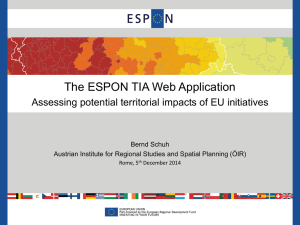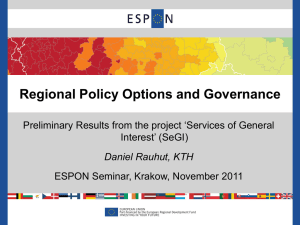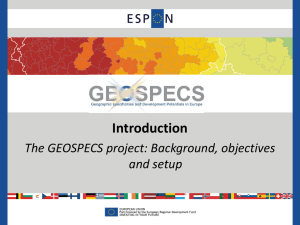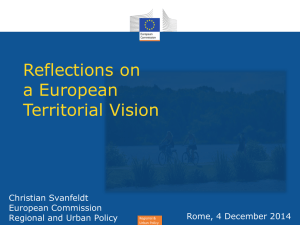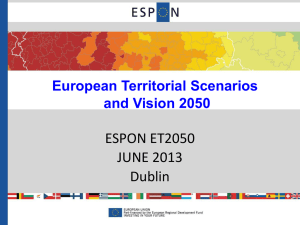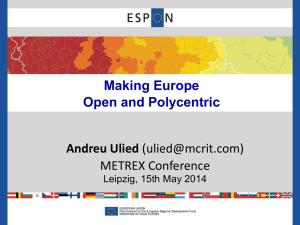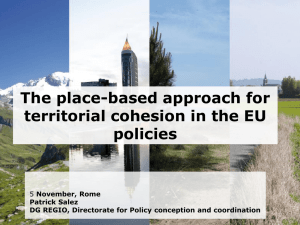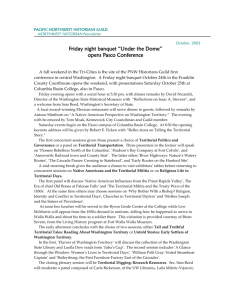Territorial accessibility in light of the ESPON ET2050 project
advertisement
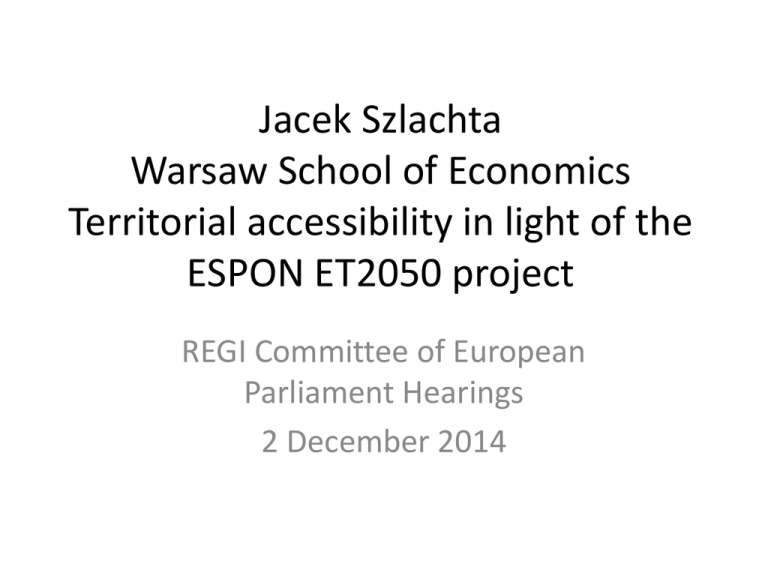
Jacek Szlachta Warsaw School of Economics Territorial accessibility in light of the ESPON ET2050 project REGI Committee of European Parliament Hearings 2 December 2014 Baseline Scenario: Accessibility travel road/rail 2036 1981 1986 1991 1996 2001 2006 2011 2016 2021 2026 2031 2041 2046 2051 European Territorial Strategy A : Promotion of Global Cities A European Territorial Strategy B: Promotion of Networks of Cities B European Territorial Strategy C: Promotion of Rural and Peripheral Regions C Recommendations for the future • Policy aims for a long term development of Europe are: openness and polycentricity. • How to make it: • Connecting Europe Globally • Promoting co-development with neighbouring countries • Unleashing regional diversity and endogenous development • Supporting a balanced urban structure • Managing natural resources sustainability Connecting Europe Globally • Opening up European markets to global competition and promoting global sustainability • Integration of transport and telecommunication networks and geographical spread of global gateways • Intelligent energy networks connecting decentralised renewal energy Promoting co-development with neighbouring regions • Linking transport, telecommunication and energy networks between Europe and Neighbouring regions • Promoting integrated territorial development across borders Unleashing regional diversity and endogenous development • Sufficient infrastructure to open up local and regional potentials Thank you for your attention • Based on: • ESPON project „European Territory 2050 „ – Andreu Ulied editor • Klaus Spiekermann, Michael Wegener (S&W) – SASI model • National Spatial Development Concept. Poland 2030 • Marshall Office of Padkarpackie Region • More information • www.espon.eu • www.Et2050.eu
